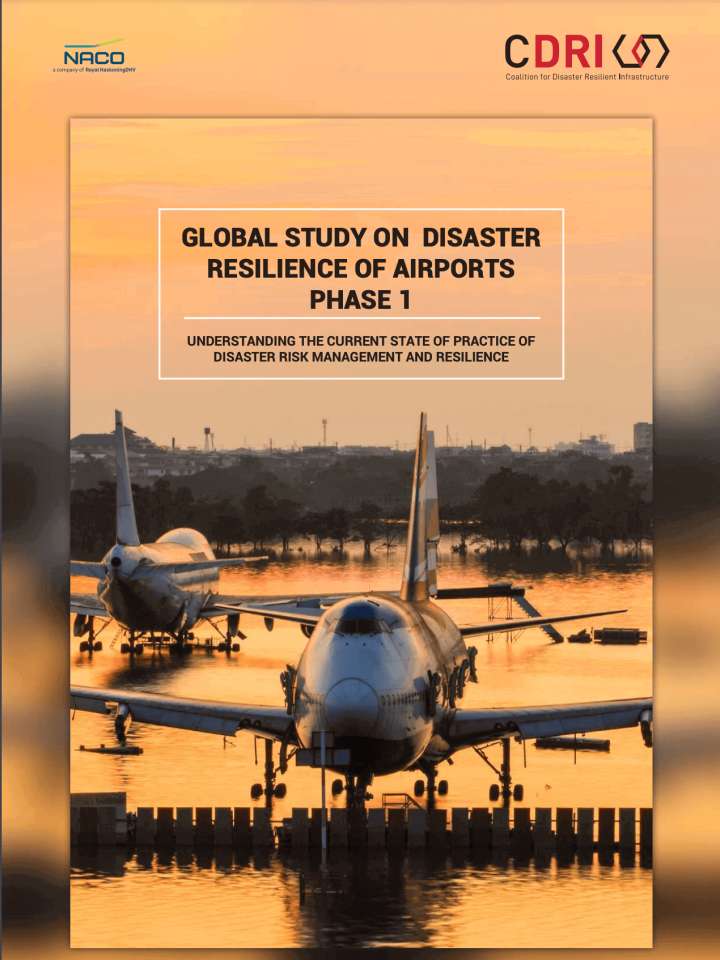Global study on disaster resilience of airports
To address the impacts of natural hazards and human-induced disasters on airports, as well as the associated direct losses and cascading economic impacts affecting the lives and livelihoods of millions of people, the Coalition for Disaster Resilient Infrastructure (CDRI) initiated the Global study on disaster resilience of airports. This report is the result of a year-long research by the Netherlands airports consultants, a company of Royal HaskoningDHV (NACO) on behalf of CDRI. Study sets out to define the current state of practice on disaster risk management and resilience at airports globally.
Findings from the study indicate that across regions, airports expect extreme storms and winds, extreme precipitation, and third-party systems failures to result in partial infrastructural restrictions, flight delays, and indirect economic loss to airport partners. Each region displays a different ability to recover from climate and natural hazards. Notably, North America displays a slower ability to fully recover from extreme icing conditions, extreme storms and winds and geological hazards compared to Asia/Pacific and Europe. Similarly, although airports in Africa tend to resume operations at similar rates than their counterparts, full recovery appears to take longer in the region.
Explore further
